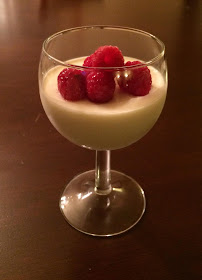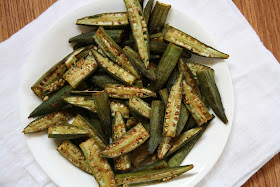Gather ‘round, ye
children come
Listen to the old, old story
Of the pow’r of death undone
By an infant born of glory.
Son of God, Son of Man.
By far the nerdiest
Christmas album I own—and hands down one of my favorites—is Andrew Peterson’s
Behold
the Lamb of God. It’s usually the first CD I listen to each Christmas
season (yes, I still use CDs) because it does such a good job of setting the
scene and putting Christmas in context. Now, I like Rockin’ Around the
Christmas Tree just as much as the next person, but ultimately Christmas is
about a God who craved relationship with and wholeness for God’s people—so much
so, that this God did the most radical thing I can think of, and became human,
stepping into our shoes, into our swaddling clothes, into our mess. And
Behold the Lamb of God does an excellent
job of telling the story of this God, this people, and this baby. It begins
with a teaser of the story to come. A movie trailer, if you will, highlighting
the hero of the story.
Instead of
going straight to Bethlehem, we instead begin in Egypt, where we meet Moses,
Pharaoh, the enslaved people of Israel, and a Passover lamb. We hear the cries
of a people who long not only for deliverance but also for God’s mercy and
closeness even as they find deliverance.
Lord,
let your judgment passover us
Lord, let your love hover near.
Don’t let your sweet mercy passover us
Let this blood cover over us here.
This longing
continues as these people enter the Promised Land and seek strong leaders:
Moses is dead, Joshua isn’t kingly enough, and what they need is a king. Saul
is a disappointment, though David is pretty awesome. But eventually exile
happens and “the people of God are scattered abroad.” They ask the prophets if
they’ll ever have another king like David—one who’s wise, loved by the people,
and powerful “with a sword in his fist.” And Isaiah responds that yes, a King
is coming, but he’ll be different than expected. As the years stretch on, Israel’s
longing for Messiah—for ruler and deliverer—intensifies:
Our
enemy, our captor, is no Pharaoh on the Nile,
Our toil is neither mud nor brick nor sand.
Our ankles bear no calluses from chains yet, Lord, we’re bound.
Imprisoned here we dwell in our own land.
Deliver
us, deliver us, O Yahweh, hear our cry
And gather us beneath your wings tonight.
Our
sins they are more numerous than all the lambs we slay.
Our shackles, they were made with our own hands.
Our toil is our atonement and our freedom yours to give.
So, Yahweh, break this silence if you can.
And at the
end of this song, we catch a glimpse of Yahweh’s longing that mirrors Israel’s:
Jerusalem,
Jerusalem, how often I have longed
To gather you beneath my gentle wings.
I think that
what I like so much about this first portion of the album is the desperation
and the honest treatment of pain in the lives of God’s people. Most Christmas
music is festive, happy, celebratory. These songs revel in the pleasures of
sleigh rides and jingle bells, marvel over a child in a manger, and paint
pictures of angelic choirs filling the sky with their brilliance and good news.
And this is good! God becoming human is remarkable and worthy of every praise
we can muster!
Also,
sometimes life is hard. And it’s comforting to find a collection of songs that
doesn’t gloss over that. It’s been a rough year for me and some of my close
friends. As a community we’ve dealt with loneliness, burnout, many
miscarriages, work and financial uncertainties, death. And it’s been a rough
year for our country and our world. It’s nearly impossible to log onto Facebook
without seeing some fight break out over whether we’re destroying our planet, or
whether refugees and immigrants are coming here as terrorists and/or
freeloaders, or whether members of the LGBT community are abominations, or
whether racism is still a thing, or whether this religion or people group or political
party or fill-in-the-blank is offending me or challenging my rights, or . . .
Deliver
us, deliver us, O Yahweh, hear our cry
And gather us beneath your wings tonight.
I love that
in this album, there is longing and deliverance, sorrow and praise. Because the
centuries of slavery, imperfect leaders, exile, and growing distance from God
made the arrival of the Messiah that much more powerful and miraculous.
As the story
continues to unfold, we get a review of Christ’s lineage through a playful
little song called
Matthew’s Begats. You know, Abraham begat Isaac who begat
Jacob and so on? Kind of a brilliant song, if you ask me, and unlike any other
Christmas song I’ve heard! We then meet Joseph and Mary and follow them to
Bethlehem. We hear Mary’s pained cries and see her and Joseph in a
non-glamorous and far more realistic birth scene: in a cold, unclean stable,
with “blood on the ground,” “tears upon her face,” and “no mother’s hand to hold.”
We join the shepherds in marveling at the angels’ proclamation that the
Savior—this king from David’s line, this long-awaited Messiah—has arrived! We
join in the angels’ unfettered hallelujahs, then slip quietly back to the
stable for the ballad that serves as the climax for this story that has taken
centuries to unfold.
Behold
the Lamb of God, who takes away our sin.
Behold the Lamb of God, the life and light of men.
Behold the Lamb of God, who died and rose again.
Behold the Lamb of God, who comes to take away our sin.
There’s a
celebratory reprise of the album’s opening song, calling us to “sing out with
joy for the brave little boy, who was God but made himself nothing,” followed
by a no-frills recording of the simple chorus of O Come All Ye Faithful. And
then tucked away at the very end of the CD is a recording of Andrew Peterson’s
little boys singing a song that many of us learned as kids: “Our God is so big,
so strong and so mighty, there’s nothing my God cannot do.”
I always
assumed Peterson threw that in there because he wanted to show off his sons’
cuteness. And maybe that was part of his motivation. But if you think about it,
the song actually fits pretty well. Because our God is so big! Our God is mighty
enough to do crazy things like delivering an entire nation out of slavery,
bringing them priests and prophets to facilitate relationship, sharing their
griefs, fiercely pursuing a fickle bride, and dwelling among us as a baby, then
a kid, then a man who overturned social and religious norms and demonstrated
his power by choosing humble sacrifice over political and military prowess.
Indeed,
there is nothing our God cannot do.
Even so,
come, Lord Jesus!
All
quotations taken from various songs on Behold
the Lamb of God by Andrew Peterson, originally released in 2004.










































